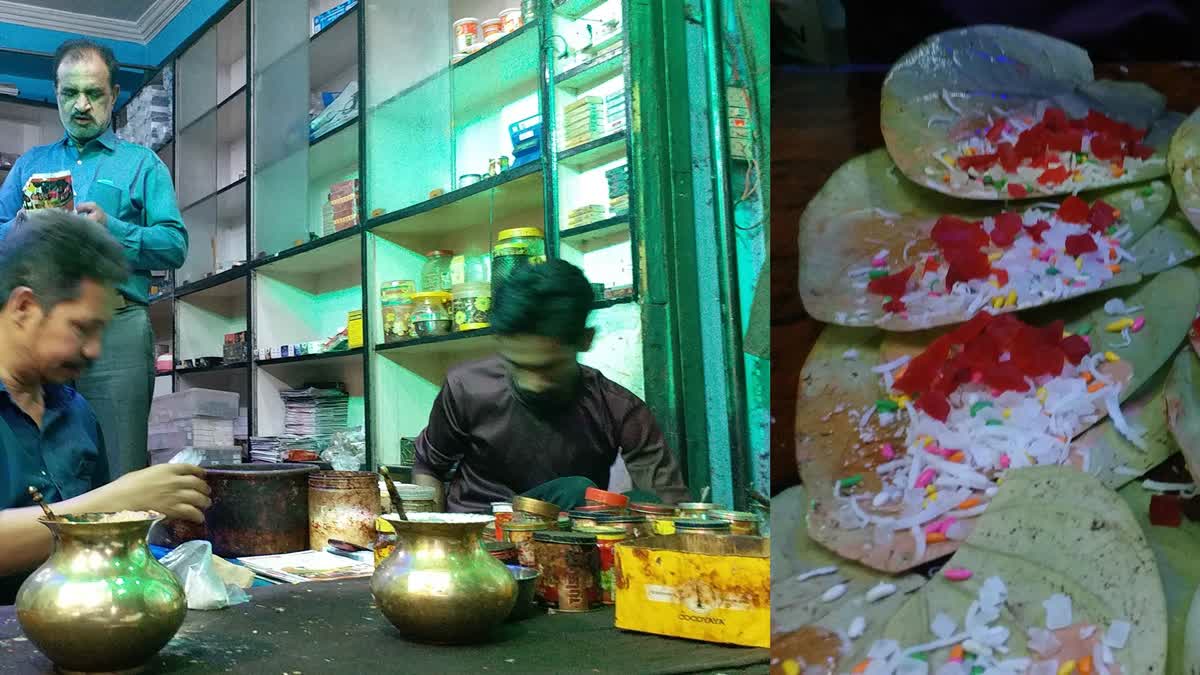Lucknow: The tradition of passion for chewing betel leaves or 'paan' is old and continues even today. In Uttar Pradesh, King Ghaziuddin Hyder is believed to have started the tradition of eating paan. It is said that the Nawabs of Awadh were also fond of paan, in which traces of gold and silver were added to increase male strength. The betel leaf is also believed to have medicinal value and was also used to treat many diseases.
Although Banarasi Paan has gained more popularity in modern times, Lucknow Paan has a unique identity due to its delicacy and sophistication. It is said that the people of Lucknow do not eat paan but are fond of paan. In Lucknow, many pots are also used to eat paan which include Pandan, Khasdan and Aghladan.
Lucknow Paan is whitish while Banarasi is yellow in colour. Banarasi paan requires effort to eat while Lucknowi paan is relatively soft and melts in the mouth. Banarasi paan uses slightly larger and harder lumps and common lime while Lucknow paan uses fine betel nut and creamy lime so that the paan melts effortlessly in the mouth.
Abdul Halim Sharar, one of the famous writers of Lucknow, writes in his book that the first development in the culture of Lucknow was the paan and the betel leaves were refined first. Mahoba's betel nut was naturally good in quality, but at that time betel nut cultivation had also started in Lucknow. Paan sellers used to bury Pan leaves in the ground to remove its rawness. This turned the leaves white and also removed the astringency. The new form of paan is called Begum Paan because it was very soft and good in taste.
Nawab Masood Abdullah, who belongs to the Nawabi family, while talking to ETV Bharat, said that during the period of the Nawabs of Awadh, some special people were hired to plant betel leaves, who took care of all delicacy and sophistication. “I remember that my mother used to plant betel leaves for my father and she used to plant betel leaves with such finesse that she would remove the veins that were present in the betel leaves. This shows the sophistication with which the people of Lucknow were fond of paan,” Abdullah recalled.
Panwalis were very special in the royal court during the Nawabi period. Mohammad Azhar, the owner of a famous Pan shop in Nakhas, said that they used to hear in their childhood that during the Nawabi era, there were paan wallis in royal palaces and they were kept on special salary. Their job was only to feed the paan.
There has been a change in betel varieties, the famous betel seller of Nakhas, Mohammad Azhar, popularly known as Azhar Bhai, said. To keep Lucknowi culture alive, the paan sellers have named paan after Nawab personalities. Azhar said that his shop has been running for the past 80 years and he himself has been running it for 40 years.
What initially started with simple paan has evolved into many types of paan today. Azhar said that everything from 'Begum Pasand Paan', 'Wajid Ali Shah's Gailuri', 'Shahi Meetha Paan', 'Palang Tod Paan' to 'Back Pain Paan', 'Mouth Sore' and 'Sweet Sour Paan', 'Angara Paan', 'Cold Paan' are available at his shop.
The use of berry curry, amla, pineapple, gulkand and flower chutney in all these paan spices makes it more delicious. Special attention is also paid to the types of betel leaves while making paan.



